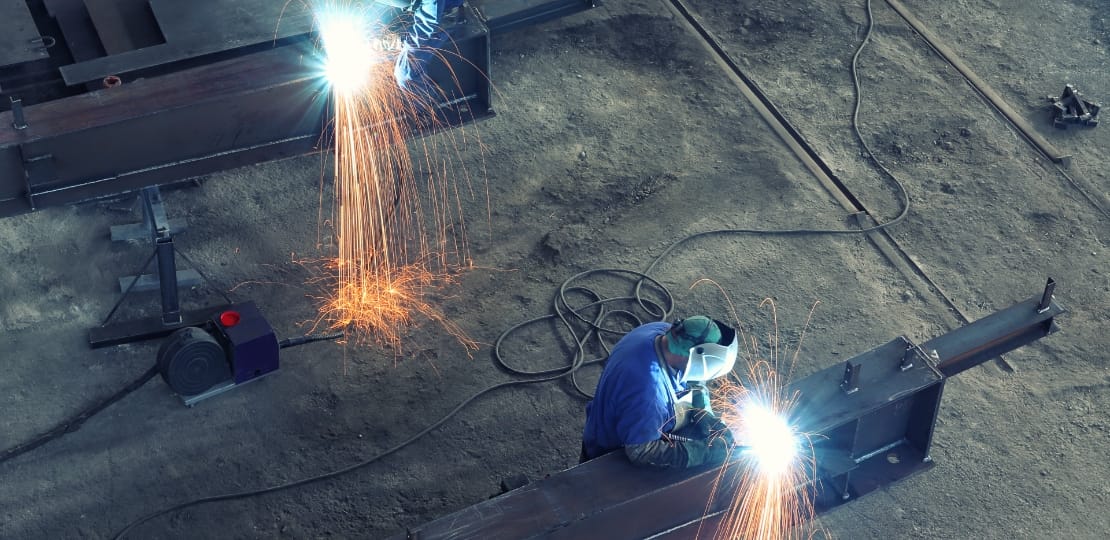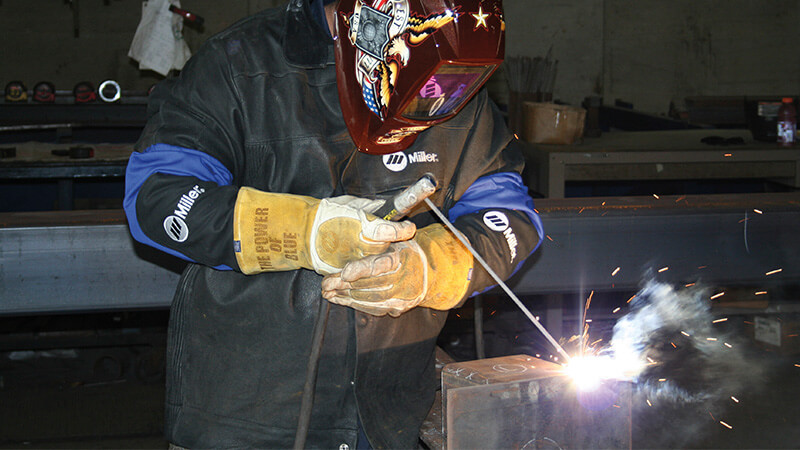Common Welding Fixing Issues and Just How to Address Them Efficiently
Welding repair services typically come across a series of issues that can jeopardize the stability of the end product. Typical issues include insufficient infiltration, porosity, and misalignment, to name a few. Each flaw presents one-of-a-kind challenges that require details strategies for resolution. Comprehending these problems is crucial for welders intending to enhance their skills and end results. This conversation will explore these typical welding fixing concerns and efficient approaches to resolve them.
Inadequate Penetration
Insufficient penetration happens when the weld metal fails to fully fuse with the base product, leading to weak joints and potential architectural failures. This concern commonly originates from insufficient warm input, wrong electrode angle, or inappropriate welding speed. Welders may run into insufficient infiltration because of a mistake of the essential criteria for a specific material density or type. Additionally, contamination on the base product's surface area can impede efficient bonding, intensifying the problem. To deal with inadequate infiltration, welders should guarantee proper settings on their equipment and preserve a tidy work surface area. Regular evaluation of welds is recommended to determine any kind of deficiencies early, enabling prompt adjustments and the avoidance of jeopardized structural integrity in welded assemblies.
Porosity
Porosity is an usual problem in bonded joints that materializes as tiny gas bubbles trapped within the weld steel. This flaw can endanger the stability of the weld, bring about decreased toughness and possible failure under stress. Belgrade Welding. Porosity typically emerges from contamination, dampness, or inappropriate welding methods, which enable gases to get away right into the liquified weld swimming pool. To resolve porosity, welders must ensure proper surface prep work, keep a clean workplace, and utilize ideal welding criteria. Additionally, picking the best filler product and protecting gas can minimize gas entrapment. Normal inspection and screening of welds can aid recognize porosity early, ensuring prompt restorative actions are taken, consequently preserving the high quality and dependability of the bonded structure
Misalignment
Imbalance in welding can occur from numerous aspects, consisting of improper arrangement and thermal development. Recognizing the source is essential for effective resolution. Numerous correction strategies are offered to straighten components and ensure architectural integrity.
Root causes of Misalignment
Welding misalignment often originates from a range of underlying issues that can endanger architectural honesty. One primary cause is improper fit-up of elements prior to welding, which can result in gaps and unequal surface areas. Variants in thermal development throughout the welding process can also cause distortion, particularly if the materials being joined have various coefficients of expansion. In addition, poor fixturing and clamping might fall short to hold components firmly in location, leading to activity during welding. Inadequately conserved devices, including welding machines and devices, may present variances in the weld bead, additional adding to imbalance. Operator mistake, stemming from not enough training or experience, can also play a considerable duty in creating misaligned welds.

Correction Methods Offered
Dealing with imbalance effectively calls for a mix of rehabilitative strategies customized to the details concerns available. One typical approach is making use of jigs or fixtures to hold parts in the appropriate setting throughout welding, guaranteeing constant positioning. Furthermore, preheating the materials can help in reducing distortion and boost fit-up. For substantial misalignment, mechanical realignment techniques, such as utilizing hydraulic jacks or clamps, can be utilized to fix the placement prior to welding. Post-weld warm therapy might also be needed to ease tensions triggered by misalignment. Cautious evaluation and modification during the setup phase can protect against misalignment concerns from ending up being significant troubles, promoting a smoother welding procedure and improving overall structural honesty.
Distortion
Distortion is a typical difficulty in welding that can develop from various variables, including unequal home heating and air conditioning. Recognizing the reasons for distortion is vital for applying efficient avoidance methods. Resolving this issue not just enhances structural honesty however also enhances the overall top quality of the weld.
Sources of Distortion
When based on the intense warmth of welding, materials commonly go through adjustments that can lead to distortion. This sensation primarily occurs from thermal expansion and tightening throughout the welding process. As the weld location warms up, the material expands; upon air conditioning, it acquires, which can develop interior anxieties. On top of that, uneven home heating across a workpiece can intensify these anxieties, causing bending or flexing. The sort of product additionally plays a significant role; steels with differing thermal conductivity and coefficients of growth might respond in a different way, resulting in unpredictable distortions. Poor joint layout and inadequate fixturing can add to imbalance during welding, increasing the probability of distortion. Comprehending these causes is crucial for reliable welding repair service and avoidance methods.
Avoidance Techniques
Effective avoidance methods for distortion during welding emphasis on managing heat input and making certain proper joint layout. Maintaining a regular warm input assists to minimize thermal growth and tightening, which can cause distortion. Using strategies such as pre-heating the work surface can also minimize the temperature slope, advertising uniform home heating. Additionally, picking ideal joint designs, such as T-joints or lap joints, can improve stability and reduce anxiety concentrations. Applying appropriate fixturing to secure the work surfaces in place better help in preserving alignment during the welding procedure. Lastly, staggered welding sequences can distribute heat extra evenly, stopping localized distortion. By using these techniques, welders can significantly decrease the probability of distortion and improve the total top quality of their welds.
Breaking
Fracturing is a typical issue come across in welding repair work, commonly arising from numerous factors such as inappropriate air conditioning rates, material choice, or inadequate joint prep work. The incident of cracks can greatly compromise the honesty of the weld, leading to prospective failings during operation. To resolve this concern, welders need to first assess the origin triggers, making certain that products are compatible and properly chosen for the details application. Additionally, regulating the cooling rate throughout the welding procedure is vital; rapid cooling can cause tension and cause fracturing. Appropriate joint layout and preparation additionally add to click for more minimizing the risk. Executing these strategies can boost weld quality and longevity, inevitably minimizing the chance of cracking in completed weldments.

Insufficient Combination
A considerable problem in welding repair work is incomplete fusion, which takes place when the weld steel does not effectively bond with the base material or previous weld passes - Montana Mobile Welding and Repair. This problem can cause weak points in the joint, potentially endangering the stability of the welded framework. Elements contributing to incomplete combination include insufficient warm input, inappropriate welding technique, and contamination of the surface areas being joined. To resolve this problem effectively, welders should guarantee appropriate pre-weld cleansing and surface preparation, as well as change their welding criteria to attain sufficient infiltration and combination. Normal examination during the welding procedure can additionally aid identify insufficient blend early, enabling prompt rehabilitative procedures to enhance the total quality of the weld
Overheating
While welding repair services can boost architectural stability, overheating offers a considerable obstacle that can lead to product destruction. Extreme heat throughout welding can alter the mechanical buildings of metals, resulting in reduced stamina, raised brittleness, and bending. This phenomenon is specifically essential in high-stress applications where architectural reliability is vital. Identifying overheating can include visual assessments for discoloration or distortion, along with keeping an eye on temperature during the welding process. To alleviate the dangers connected with overheating, welders need to utilize ideal methods, such as regulating heat input, readjusting traveling rate, and using appropriate filler products. In addition, applying pre- and post-weld warmth therapies can assist restore product properties and improve the overall high quality of the fixing, making certain long-lasting performance and security.
Often Asked Questions
What Are the Usual Indicators of a Welding Problem?

Exactly How Can I Check My Welds for High quality?
To check welds for high quality, one can utilize aesthetic examinations, ultrasonic screening, and radiographic methods. Each method ensures structural integrity, determines defects, and validates adherence to defined criteria, ultimately enhancing the integrity of the welded joints.
What Safety and security Precautions Should I Take While Welding?
When welding, one should focus on safety by putting on ideal individual safety equipment, ensuring appropriate ventilation, protecting combustible products away, preserving a clean firepower welder office, and understanding surroundings to avoid mishaps and injuries.
Can I Fix a Weld Without Redesigning the Entire Joint?
Repairing a weld without redoing the whole joint is possible, depending on the damages (Montana Mobile Welding and Repair Belgrade Welding). Methods such as grinding, including filler product, or making use of a welding process can successfully attend to details flaws while protecting the surrounding structure
What Devices Are Crucial for Reliable Welding Fixes?
Vital tools for efficient welding fixings consist of a welding equipment, wire brush, mill, safety gear, clamps, and filler products. Each device plays an important role in ensuring high quality and safety and security throughout the repair service procedure. Porosity normally arises from contamination, wetness, or incorrect welding strategies, which enable gases to escape right into the liquified weld swimming pool. Inadequately kept devices, including welding makers and devices, may present inconsistencies in the weld bead, more contributing to misalignment. When subjected to the intense warmth of welding, products commonly undergo adjustments that can lead to distortion. Splitting is a common issue encountered in welding repair services, frequently resulting from different aspects such as inappropriate cooling prices, product option, or poor joint prep work. A considerable issue in welding repair services is insufficient fusion, which occurs when the weld metal does not properly bond with the base product or previous weld passes.